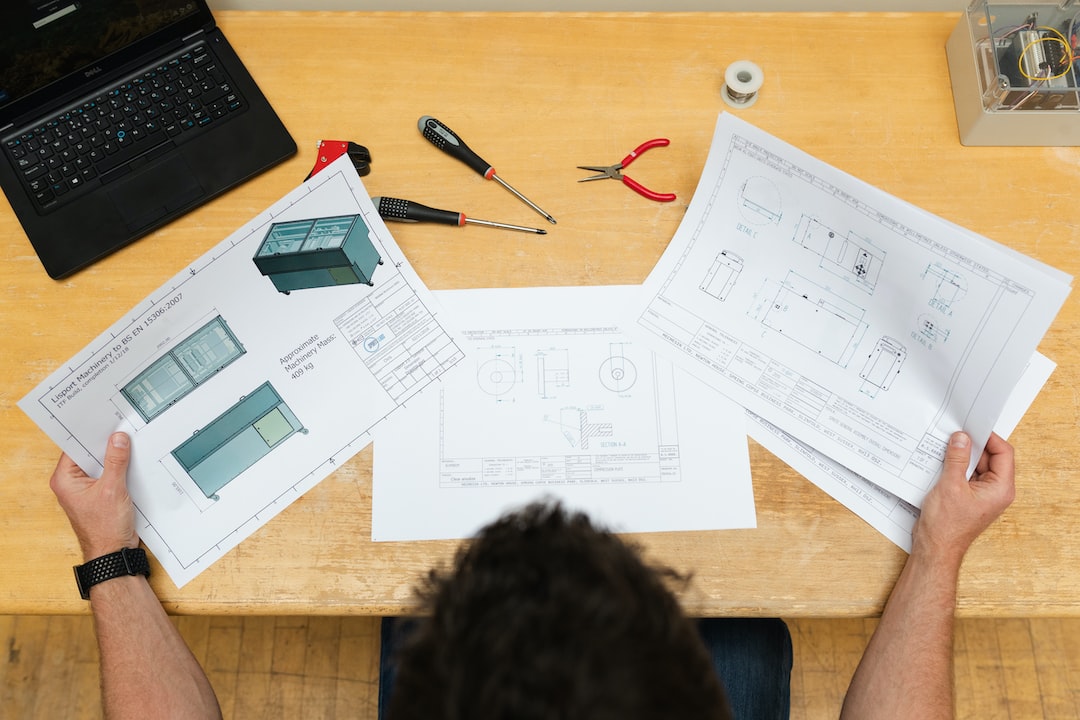Today, we’re diving deep into some next-level stuff: Civil Engineering. Yep, you heard that right – I’m talking about the bridges, roads, buildings, and all things infrastructure that keep our world running. But let me tell you, Civil Engineering isn’t just about boring concrete and steel anymore. We’re living in an age of innovation, where technology is changing the game. If you thought this field was headed for a build-a-bridge-and-get-over-it scenario, think again. The future is here, and it’s wild. Imagine drone armies, 3D-printed skyscrapers, self-healing concrete (yup, that’s a thing), and even structures designed by artificial intelligence. Civil engineers aren’t just building – they’re innovating, disrupting, and, most importantly, keeping it sustainable. So sit tight, Gen-Z fam, because we’re about to explore the ten technologies that are straight-up revolutionizing Civil Engineering.
1. 3D Printing: Constructing the Future in Layers 🎨
First up, let’s talk about 3D printing. We’ve all seen 3D printers spewing out mini Yoda figurines or phone holders, but the stakes just got a lot higher. Imagine an entire bridge or a multi-story building coming to life right from a chunky, mechanical contraption squeezing out concrete like icing on a cake. That’s right, we’re not playing around here. 3D printing in Civil Engineering is now a legit thing, and it’s shaking things up big time.
Let me break it down for you. Traditional construction takes a whole army of workers, a ridiculous amount of time, and a ton of resources. But with 3D printing, you feed a blueprint into the printer, and voila, you can create literally anything you want with pinpoint accuracy. This tech is cutting down costs, minimizing waste, and reducing construction times like nobody’s business. Picture this: a whole house printed in just 24 hours. Yeah, it’s real.
And why should you care? With the world’s population booming and urban spaces getting tighter, 3D printing holds mad potential for solving housing crises big time. Plus, environmental impact? Slim to none, especially when you start printing with sustainable materials.
But hold up – 3D printing isn’t just about tossing out houses in fast-forward. It also allows for designs that would be too complex or expensive to accomplish with traditional methods. Architects and engineers are geeking out on this tech because it opens up a whole new world of creativity. Picture building shapes so complex that they’d make your geometry teacher get a headache. That’s the future, fam.
2. Drones: The Sky’s the Limit 🚁
Let’s talk drones. If you’ve been up on your social media trends, you know that drones have been taking over the world – and civil engineering is no different. These flying tech-nos are about more than just capturing sick aerial shots for your Insta feed; they’re becoming an invaluable tool in construction and infrastructure projects. From site surveying to tracking construction progress, drones are changing the way civil engineers operate.
One of the biggest hurdles at any construction site is getting accurate, up-to-date information without having to trek yourself (and your equipment) to dangerous, hard-to-reach places. Enter drones. With high-resolution cameras, sensors, and GPS, drones can survey entire sites from the air in a fraction of the time it would take humans. And they’re doing it without putting anyone in harm’s way. When you can analyze a construction site from your laptop, sipping on a pumpkin spice latte, we’re talking about next-level convenience.
But wait, there’s more. Drones don’t just fly overhead for giggles; they’re also essential for ensuring the quality and safety of infrastructure. By capturing detailed images and data of a construction site, drones can help identify potential issues long before they become a full-blown catastrophe. It’s like an eye in the sky watching over everything, kicking any guesswork out of the window. They also make progress monitoring a breeze. If something’s off, your drone will let you know. And let’s not forget they’re perfect for documenting every stage of construction for later analysis or for showcasing your work to clients.
Pretty soon, you may even see drone swarms—groups of drones working together to build structures autonomously. Imagine construction sites where drones do most of the work, and humans simply oversee the operation. It’s definitely something to look forward to. 🛠️
3. Smart Cities: Where Tech Meets Infrastructure 🌆
You’ve probably heard about smart homes, but let’s talk smart cities because that’s where things really get interesting. Imagine living in a city where everything’s connected—buildings, transportation, utilities, you name it. These aren’t just buzzwords; smart cities are popping up all over the place, and Civil Engineers are at the heart of making them happen. And let’s be real, the idea of living in a city that’s basically one giant computer is seriously dope.
So, what exactly makes a city “smart”? It’s all about using sensors, data, and Internet of Things (IoT) devices to monitor and manage everything in real-time, from traffic flow to energy consumption. Imagine a world where traffic lights adjust based on real-time traffic data, or park benches that can alert municipal services when they need maintenance. The streets, buildings, and infrastructure would all talk to each other in a digital symphony of efficiency, making cities safer, cleaner, and way more livable.
For civil engineers, smart cities are like a sandbox of possibilities. They’re designing infrastructure that doesn’t just exist—it communicates, adapts, and learns over time. Roads with sensors to detect deterioration, bridges with systems to monitor structural health, and waste management systems that optimize themselves automatically are just the beginning. We’re talking about total city optimization here. Smart cities are about transforming urban living into something futuristic and super-efficient, while also aiming for minimal environmental impact. It’s like living inside an episode of Black Mirror without the dystopian vibes.
And get this: smart cities aren’t just for new developments. Existing cities all around the globe are retrofitting their infrastructure to become smarter. It means you don’t have to move to some far-off place to catch the smart city wave; it could be rolling into your neighborhood sooner than you think. With the tech revolution already in play, civil engineers today need to be part programmers, part designers, and part visionaries to keep the smart cities of tomorrow rolling smoothly. It’s where tech, sustainability, and urban life collide beautifully.
4. AI and Machine Learning: The Brainpower Behind the Construction 💻
Yo, let’s talk Artificial Intelligence (AI) and Machine Learning (ML) because, honestly, the robots are here, and they’re making moves in Civil Engineering, too. If you’re thinking this is where I tell you robots are taking over people’s jobs, chill out. Instead, AI and ML are partners in crime with human engineers. They’re doing the calculations, running simulations, and solving complex problems that take humans forever to figure out—faster than you can swipe left on your latest Tinder match.
Imagine having a super-smart BFF who can predict structural weaknesses before they happen, suggest the most efficient building materials, or even devise the safest evacuation routes during an emergency. That’s AI in a nutshell. With machine learning, these systems can learn from past data, effectively getting smarter over time—and that’s like, mind-blowing.
Here’s how it plays out in the real world. Suppose you want to build a skyscraper in a seismically active area. The AI algorithms will analyze thousands of pre-existing building designs, look at historical earthquake data, and then recommend the best design approach to make sure that baby stays standing. Oh, and they can do all that in a fraction of the time it would take humans to even get halfway through the research. The result? Safer, more resilient structures, and way faster project timelines.
But the real power of AI is in optimizing construction workflows. AI can micromanage the entire construction schedule, predicting delays and suggesting alternatives. It also helps in quality control by analyzing vast amounts of sensor data from ongoing construction to identify any deviations from the plan. We’re talking about reducing human error and speeding up the entire construction process, which is a win-win. So while AI might steal the show with its brainpower, it’s all about making the engineers of today—and tomorrow—more effective.
5. Self-Healing Concrete: Because Cracks Are Out 🚧
Cracks in concrete? Yeah, that’s like the ultimate vibe killer for any budding civil engineer. But get this: self-healing concrete is here to put an end to the nightmare of crumbling infrastructure. Seriously, it’s like a cool superpower that’ll make you rethink the very nature of concrete forever.
So, here’s how it works. Concrete is prone to cracking over time – it’s just one of those things. But when you mix self-healing agents into the concrete, something magical happens. These agents are usually bacteria or special chemicals that spring into action when water infiltrates a crack. They react with the water and calcium in the concrete to create limestone, which fills and seals the crack all by itself. It’s like your concrete called up its dermatologist and fixed its blemishes before things got ugly.
Why should you care about this sorcery? Cracks in concrete don’t just look bad; they weaken structures, cause corrosion in the rebar, and can lead to catastrophic failures if left untreated. Plus, repairing these cracks is expensive and time-consuming. But self-healing concrete is like slapping a Band-Aid on those problems before they even start. It’s low-maintenance, cost-effective, and extends the lifespan of infrastructure significantly. That’s a huge deal, especially when we’re talking about bridges, tunnels, and skyscrapers that we rely on daily.
And let’s not forget the sustainability impact. Reducing the need for constant repairs also means using fewer resources in the long run. If every structure could heal itself, we’d significantly cut down on construction waste and the carbon footprint of repair operations. The potential is mind-boggling, and it’s exactly the kind of futuristic tech Gen-Z should be hyped about. The idea of a living, breathing structure that takes care of itself is just next-level, and it’s happening right now.
6. Augmented Reality (AR): Building in the Digital and Real Worlds 🌍
Next, let’s talk about a technology that feels ripped straight from a sci-fi movie – Augmented Reality (AR). AR is already all over social media with filters and DMs, but it’s doing more than just turning your selfies into doggo faces. It’s cutting-edge tech in Civil Engineering, too, and it’s seriously upping the game by blending the real world with the digital one.
In construction, AR allows engineers and architects to map out a project digitally before a single brick is laid. It does this by overlaying digital information onto the physical world, so you can see exactly how your completed structure will look in real-time – all while wandering around the construction site with a headset or even just your phone. Imagine standing in front of an empty lot and seeing a 10-story building appear right before your eyes, designed to perfection and ready to go. Now that’s next-level trippy, right?
AR isn’t just for fancy previews, though. This tech also helps engineers catch potential design flaws early in the game. By comparing the digital model with the actual progress on the ground, AR ensures that what’s built on-site matches up perfectly with the plans. Any mistakes? AR catches them early, helping you dodge costly last-minute changes or, worse, having to start over. And it makes client presentations a whole lot easier, too. No more trying to explain your vision with fancy words or abstract blueprints – AR lets them literally see it.
In fact, AR is becoming a go-to tool for collaboration among various teams – engineers, architects, and project managers can all look at the same augmented model, discussing changes in real-time and seeing exactly how those changes will impact the project. It’s all about precision, creativity, and efficiency blended into one tool that revolutionizes how we design and build. So here’s to AR, making workflows smoother and structures more epic while keeping things hella futuristic.
7. Modular Construction: Building it Like LEGO 🏗️
Hands up if you loved LEGO as a kid (or still do)! Well, Civil Engineers are taking inspiration from those snap-together bricks with a construction method called Modular Construction, and it’s as cool as it sounds. Instead of building everything on-site, engineers are now assembling structures piece by piece – in a factory – before transporting those pieces to the site and fitting them together like a living, breathing puzzle. It’s literally giant LEGO, folks.
Here’s why Modular Construction is a game-changer. One of the biggest challenges in traditional construction is weather disruptions, which slow down progress and pump up costs. But when you’re building indoors, like with Modular Construction, weather’s got nothing on you. No rain delays, no freezing concrete, just perfectly constructed modules rolling off the assembly line, ready to be pieced together. Plus, working in a controlled environment means better quality control. It’s easier for engineers to ensure that everything meets spec when they aren’t battling the elements.
And because you’re producing these modules off-site while preparing the site for assembly, you’re massively cutting down on construction time. In some cases, it can speed up projects by as much as 50%. That means skyscrapers going up in record time with less waste, fewer disruptions, and reduced labor costs. Not too shabby, right? But that’s not all. Modular Construction is also perfect for sustainable building. Factories can reuse materials efficiently, and there’s way less construction waste to deal with. It’s a win for the environment and a win for construction budgets.
One of the coolest things about this technique? Flexibility. Since these modules are built separately, they can be reconfigured or resized without much hassle. Expand a building by adding more modules, or even relocate the entire structure by breaking it back down. It’s a really fresh, twenty-first-century approach to construction that perfectly aligns with the kind of flexible, sustainable innovations Gen-Z is hyped about. So next time you’re thinking about construction, think LEGO on a whole new level.
8. Robotics: The Future is Now 🤖
We’re in the age of robots, folks – industrial ones, to be exact, and they’re storming the Civil Engineering scene like no one’s business. Imagine a construction site where robots are handling the grunt work while humans chill out, managing from a safe distance. From bricklaying to welding, these programmed workhorses can do it all, and with way more precision than any human could manage.
Take bricklaying, a task that’s super labor-intensive and tiring for your average worker. Enter the SAM100, a robot that can lay bricks three times faster than a skilled human worker. And it doesn’t need coffee or lunch breaks! It’s also got perfect consistency, so your walls end up looking super crisp and clean. That means faster, more efficient construction with less human error.
But the robots aren’t just here to lay bricks. They’re mastering some seriously intricate tasks too. From robotic arms laying out rebar to drones that autonomously oversee entire construction sites, or even 3D-printing robots building parts layer by layer on-site, the sky’s literally the limit. Not to mention, these bots can venture into extreme environments that are too dangerous for humans, like nuclear sites or other hazardous zones. They can even detect toxic gases, build underwater, or complete high-altitude tasks that would give any human a serious case of vertigo.
Here’s why you should care: Reduced human physical strain, faster project timelines, and increased safety are a few of the reasons robots are a game-changer. Plus, they bring crazy precision—like splitting atom-level precision into constructions that have to meet exacting requirements. They also support sustainability by minimizing waste, enhancing recycling, and even improving the efficiency of energy usage on construction sites. The robots in Civil Engineering aren’t just doing our jobs—they’re making those jobs, and by extension our world, a whole lot safer and way more efficient.
So yep, the robots are taking over, but no need to worry—they’re just here to help. Ready Player One vibes, anyone? 🌐
9. Green Building Materials: Because the Planet Deserves Better 🌱
Okay, look, we’ve only got one Earth, and it’s up to us to take care of it. That’s why the move towards green building materials in Civil Engineering is so important. Concrete and steel may have built the world as we know it, but they’re also major culprits when it comes to carbon emissions. Enter green building materials – these are eco-friendly, sustainable alternatives that are all about reducing the environmental impact of construction projects.
Say hello to materials like bamboo, recycled steel, and hempcrete. Bamboo grows insanely fast and sequesters carbon as it grows, making it a killer renewable resource. Plus, it’s incredibly strong and durable. Recycled steel, on the other hand, means you’re reusing materials that would otherwise end up in landfills. Hempcrete, made from the inner woody core of the hemp plant, is not only eco-friendly but also offers great insulation properties. Mother Nature would be proud!
But don’t sleep on other innovations—graphene, aerogels, and even concrete mixes infused with carbon dioxide capture tech are making waves. The idea here is to revolutionize what we build with from the ground up. Imagine structures that actively reduce carbon footprints simply by existing. Lesser-known materials like mycelium-based composites, made from fungus, are also popping up as potential game-changers. They’re lightweight, strong, and biodegradable, so you can feel good about what’s holding your roof up.
Even in the engineering of asphalt—the stuff that paves our roads—green materials are stepping in. Mixes that include waste plastic, rubber, or even glass are finding their way into roads that are more durable and environment-friendly. This move is essential because if we’re going to keep building, we need to do it in a way that doesn’t cost the Earth. The shift to green building materials is vital for creating a sustainable future, and you – yep, you reading this – could be part of leading that change. 🌍
10. Predictive Maintenance: The Crystal Ball of Infrastructure 🧯
Last but absolutely not least, we’ve got Predictive Maintenance – the crystal ball of Civil Engineering. Think of it like Doctor Strange-level insight into the future of buildings and infrastructure. Instead of waiting for something to break, predictive maintenance uses a cocktail of sensors, real-time data, and smart algorithms to tell you when a failure is about to happen.
Here’s the scoop: Civil Engineering has always been reactive. A bridge starts showing some cracks, and we rush to repair it. A sewage system gets clogged, and we grab the plumbers. But predictive maintenance flips the script by predicting these issues before they spiral out of control. This isn’t magic; it’s tech. Sensors embedded in structures collect data on factors like stress, temperature, and vibration. This data feeds into algorithms that detect patterns, predict potential failures, and alert engineers before anything goes wrong. In the world of Civil Engineering, that’s as good as a superpower.
Imagine the cost savings from spotting problems early – no more expensive emergency repairs or catastrophic failures. It’s also a big win for safety since engineers can deal with potential issues before they put lives at risk. And because it includes automation, you get super-accurate notifications without human bias or error. You’re combining the human brains of engineers with the computing power of AI, and it’s creating a new standard of excellence in construction and maintenance.
This also plays into sustainability in a big way. By maintaining infrastructure before it fails catastrophically, we’re not only saving on costs – we’re reducing waste and resource usage too. Plus, predictive maintenance can optimize repair schedules for the least environmental impact. Whether it’s making sure a critical bridge remains safe or extending the life of a vital piece of road infrastructure, predictive maintenance is shifting Civil Engineering into the future. It’s time to look into that crystal ball 🔮 and start designing and maintaining infrastructure with predictive insight.
FAQs: All Your Burning Questions, Answered 📝
What exactly is Civil Engineering?
Civil Engineering is the branch of engineering that deals with designing, constructing, and maintaining the physical and naturally built environment. Think bridges, roads, canals, dams, and skyscrapers. Oh, and let’s not forget smart cities and sustainable infrastructure. It’s super diverse, so anything that involves infrastructure likely involves civil engineers.
Is Civil Engineering becoming more tech-savvy?
Oh, for sure! New technologies like AI, drones, and 3D printing are making Civil Engineering more cutting-edge than ever before. Engineers are using data, smart algorithms, and even robots to revolutionize the way we build and maintain infrastructure. It’s not just hammers and blueprints anymore – think 7D Building Information Modeling (BIM), machine learning, and digital twins.
What’s the hype around green building materials?
Green building materials are where it’s at if you’re passionate about sustainability. These materials are eco-friendly, often made from recycled or renewable resources, and have a low impact on the environment compared to traditional materials like concrete and steel. For Gen-Zers who care about the planet, this is an area where future Civil Engineers can really make a difference.
How do drones and AI improve construction?
Drones help with rapid, accurate site surveys and can even monitor construction progress in real time. This saves loads of manual labor and reduces the risk of mistakes. AI, on the other hand, optimizes workflows, predicts structural weaknesses before they become big issues, and can even suggest the best construction methods based on tons of data. Together, they’re transforming construction from a messy, trial-and-error process into a streamlined science.
Are self-healing materials the next big thing?
Absolutely. Self-healing materials, like self-healing concrete, fix themselves without needing external repairs. It’s a huge leap forward that could dramatically extend the lifespan of structures, reduce maintenance costs, and minimize the environmental impact of constant repairs.
Why should I care about smart cities?
Smart cities represent the next wave of urban living. They’re all about using technology to connect and optimize city services, making life more efficient and sustainable. The whole concept is changing how we think about infrastructure – things like traffic management, energy use, and waste disposal will all be automated, efficient, and carbon-neutral. Living in a smart city kinda sounds like living in the future, right?
What’s so cool about robotic construction?
Robots are already being used on construction sites to do the heavy lifting, literally and figuratively. They’re faster than humans, never get tired, and can complete tasks with super-high precision. They’re also great for reducing risks and improving safety because they can go places too dangerous for humans.
How does predictive maintenance work?
Predictive maintenance relies on sensors and data analytics to predict when a piece of infrastructure will need repairs. This means engineers can fix problems before they even become a big deal. It’s like being one step ahead, all the time, which obviously saves money, time, and resources.
Sources and References:
- Berman, N. "The Rise of 3D Printing in Construction," Construction News Today, 2022.
- Smith, J. "How Drones are Changing Civil Engineering," Engineering Digest, 2021.
- Evans, B. "Artificial Intelligence and Machine Learning in Civil Engineering," Tech for Tomorrow, 2021.
- Robinson, D. "Exploring the Impact of Green Building Materials," Green Futures Magazine, 2023.
- Turner, A. "The Marvel of Self-Healing Concrete," Concrete Innovations Journal, 2022.
- Mitchell, S. "Smart Cities and the Future of Urban Living," UrbanTech Review, 2021.
- Jones, L. "The Power of Modular Construction," Build Smart Weekly, 2022.
- Morgan, P. "Robotics in Civil Engineering: A New Era," Engineering Robotics Quarterly, 2023.
- Taylor, E. "Augmented Reality: Transforming Civil Engineering Workflows," AR Insider Blog, 2023.
- Williams, K. "Predictive Maintenance: The Future of Infrastructure," Maintenance Technology Today, 2022.
So there you have it, folks—a deep dive into the technologies that are literally revolutionizing the world of Civil Engineering. The future is bright, and it’s time to get stoked for what’s coming next!




